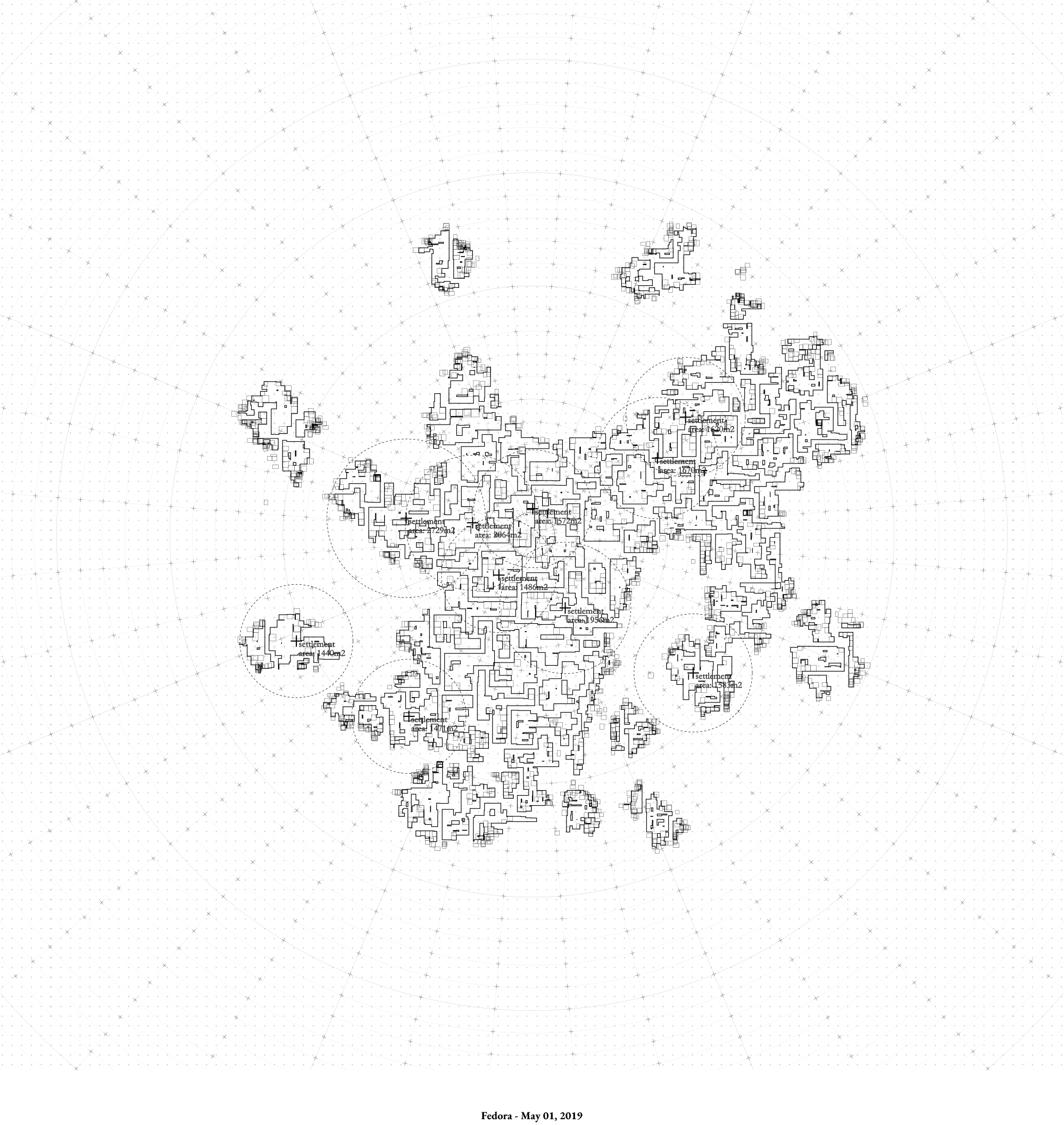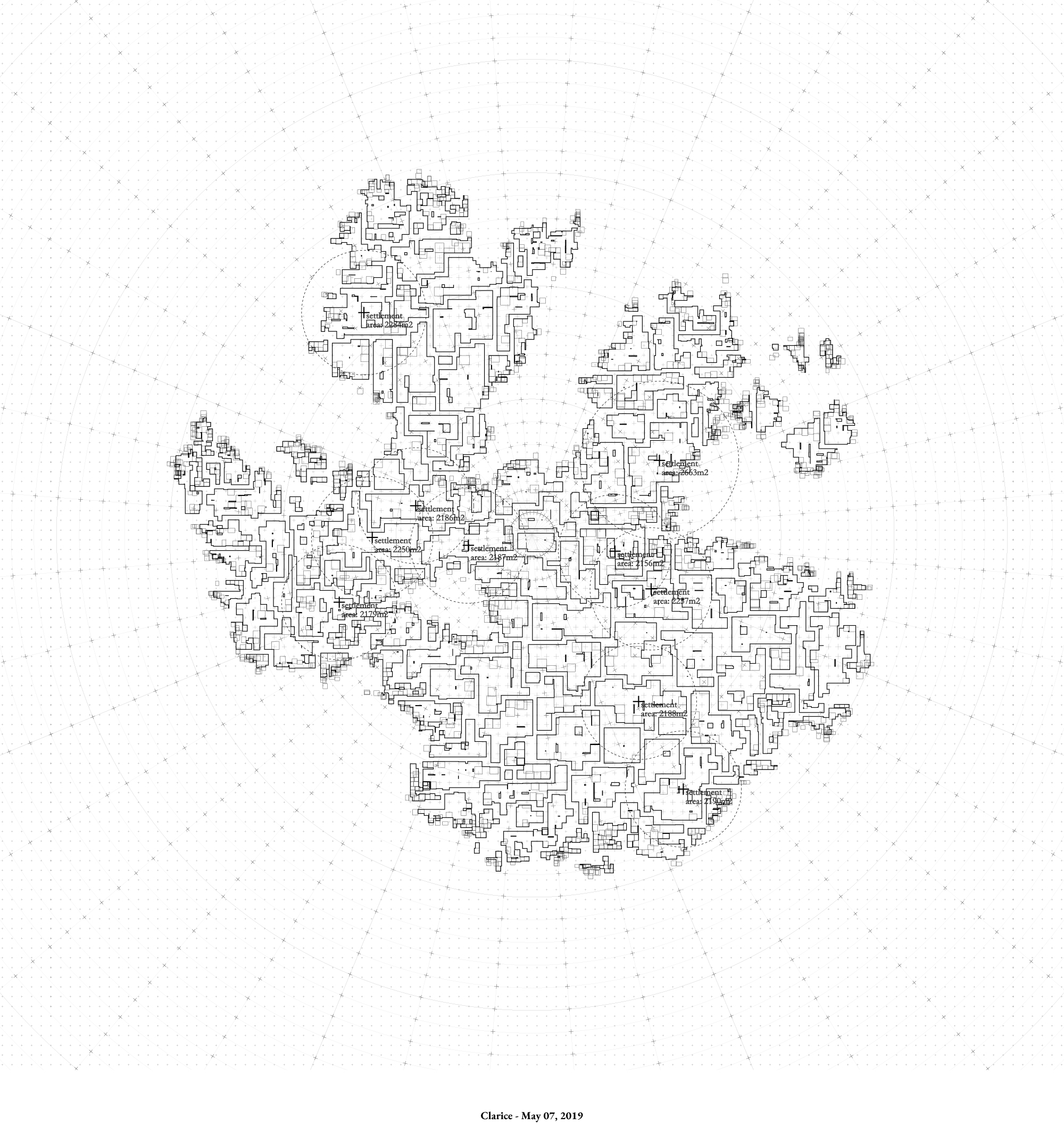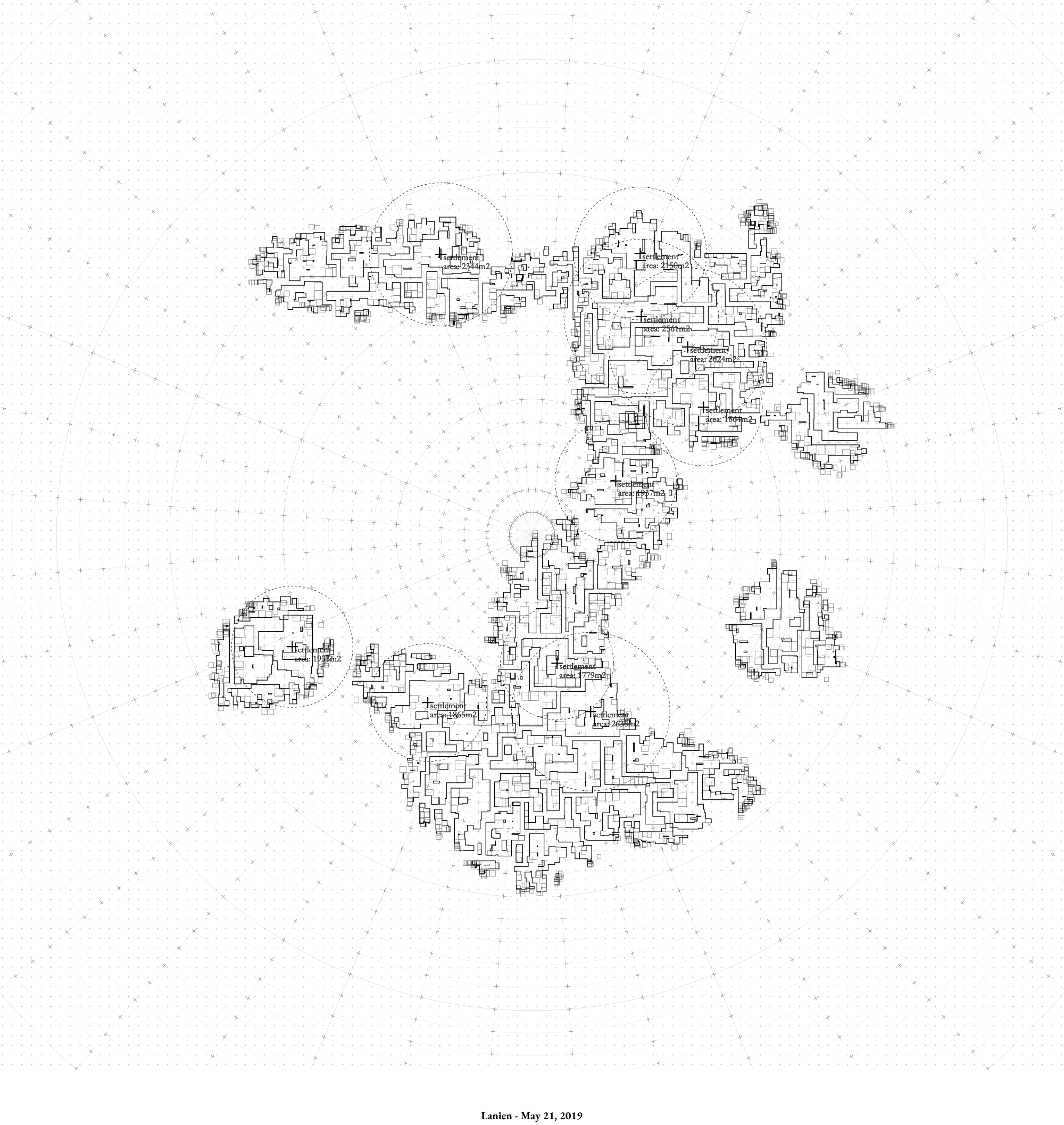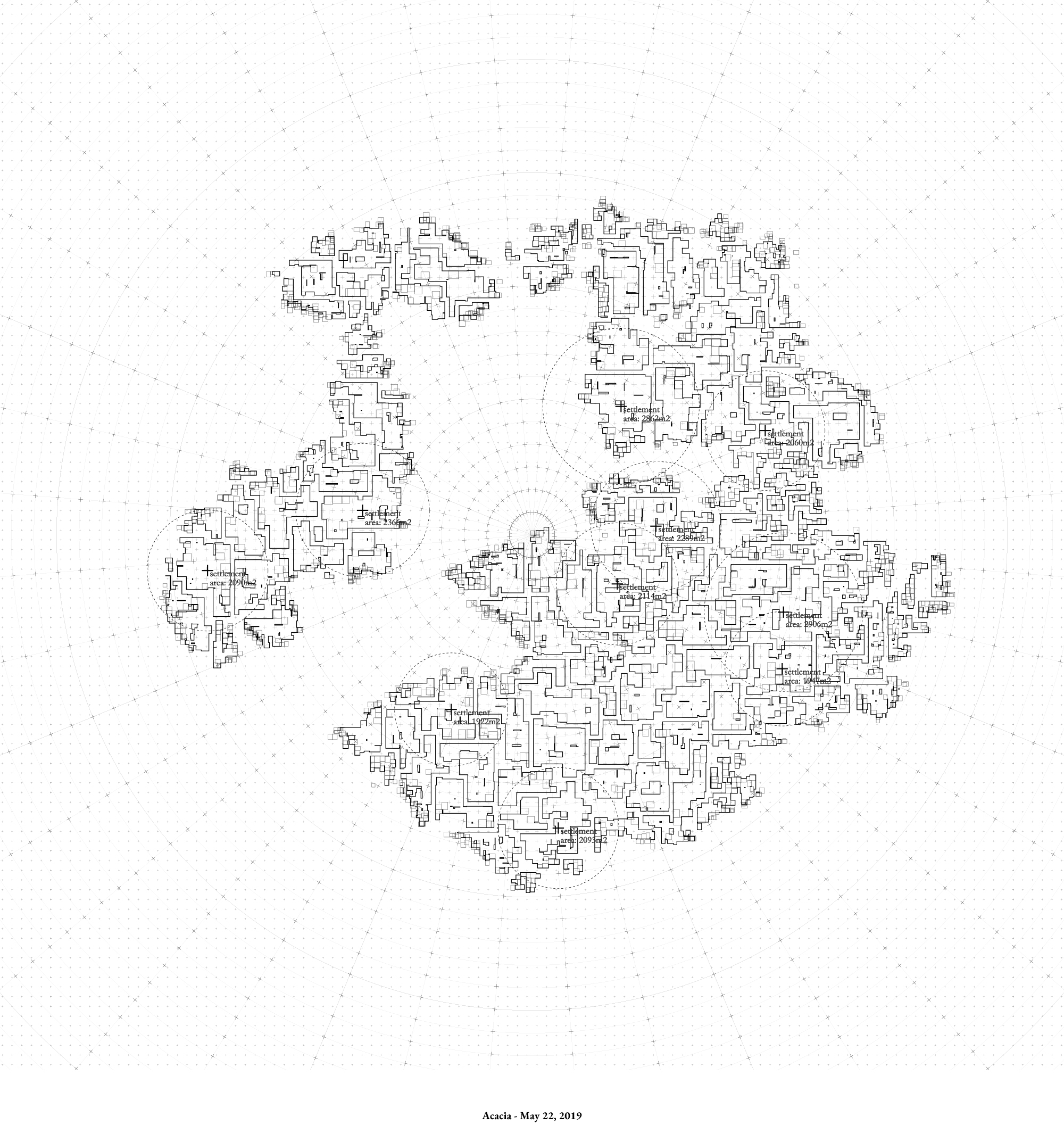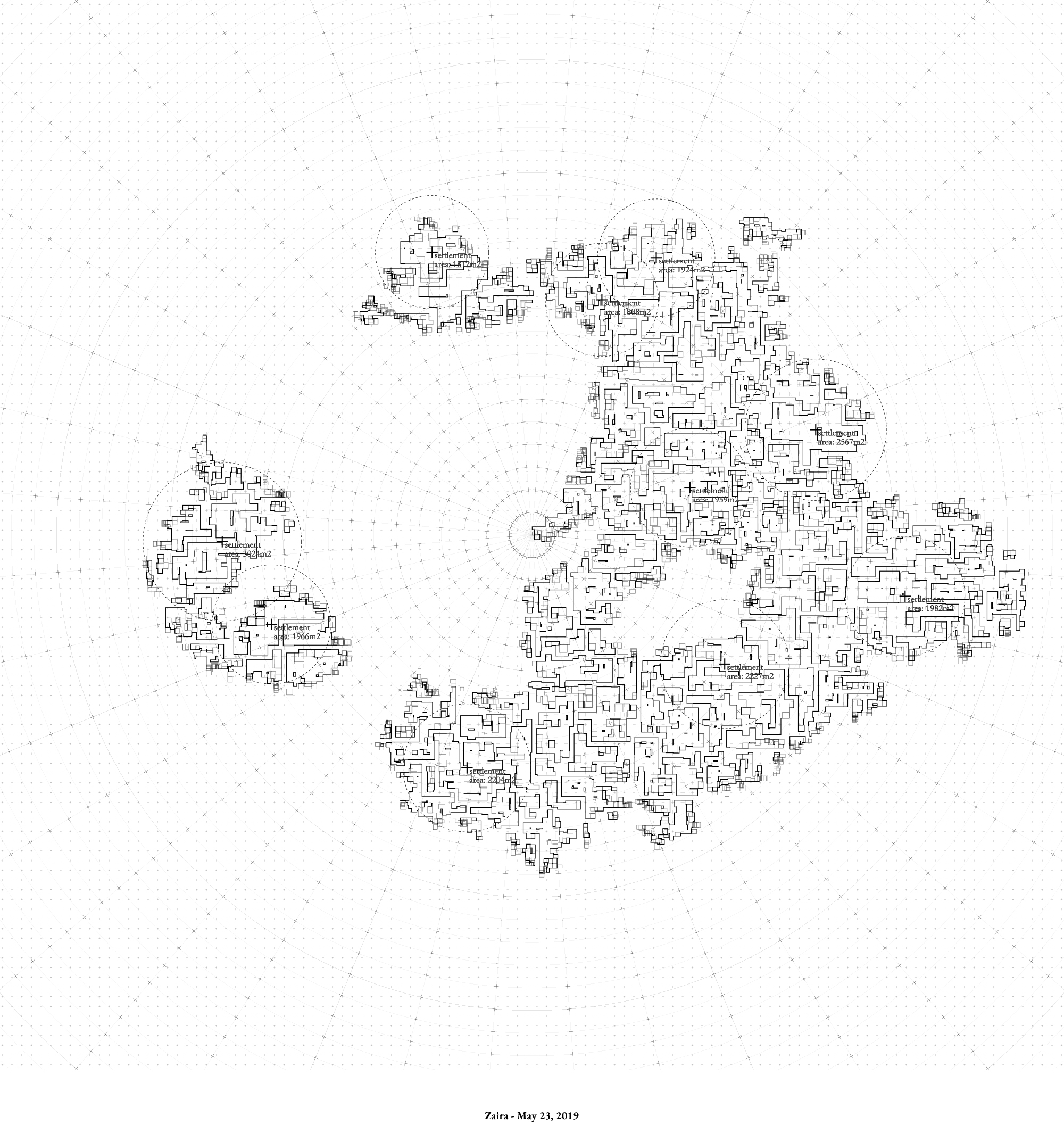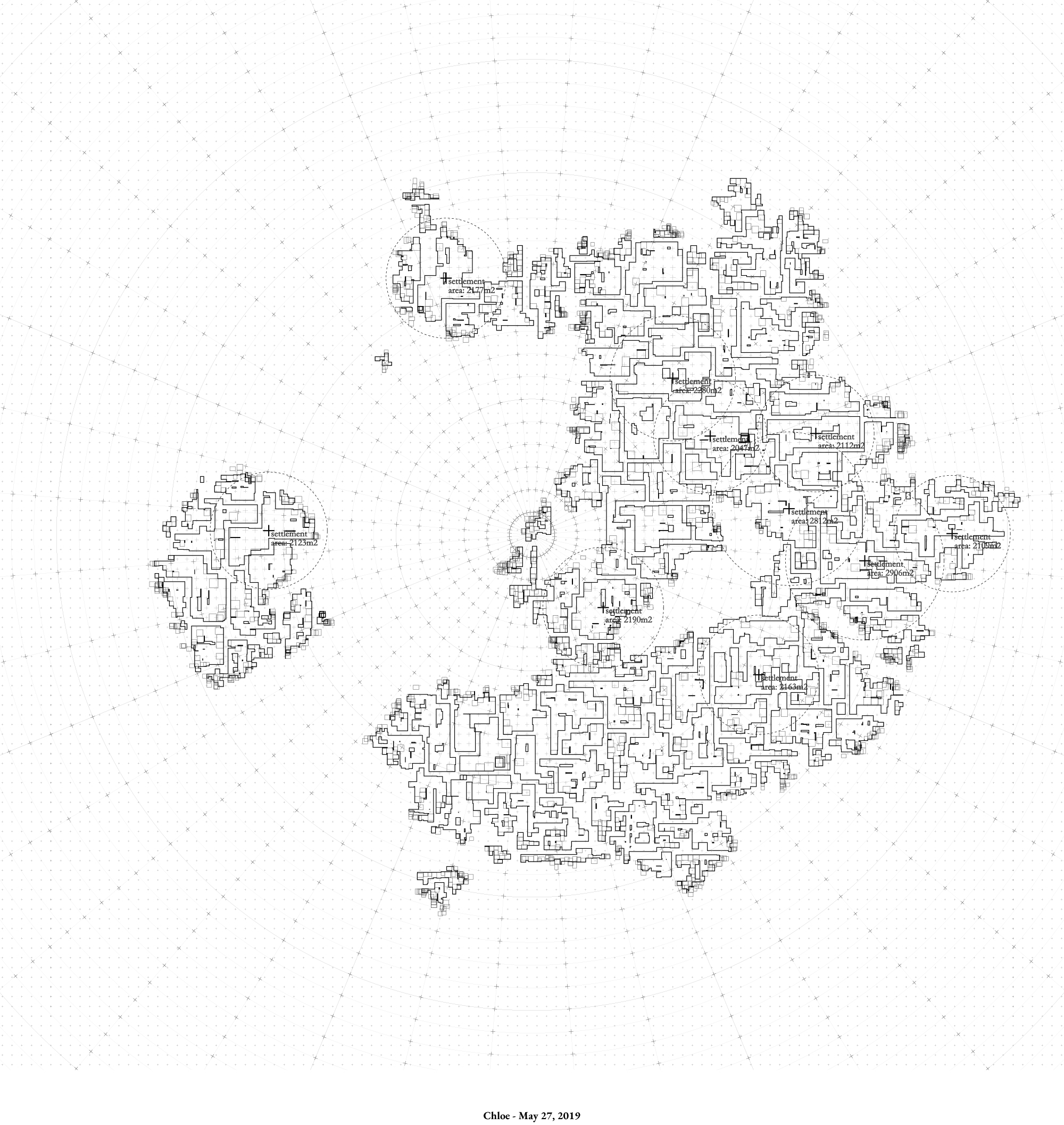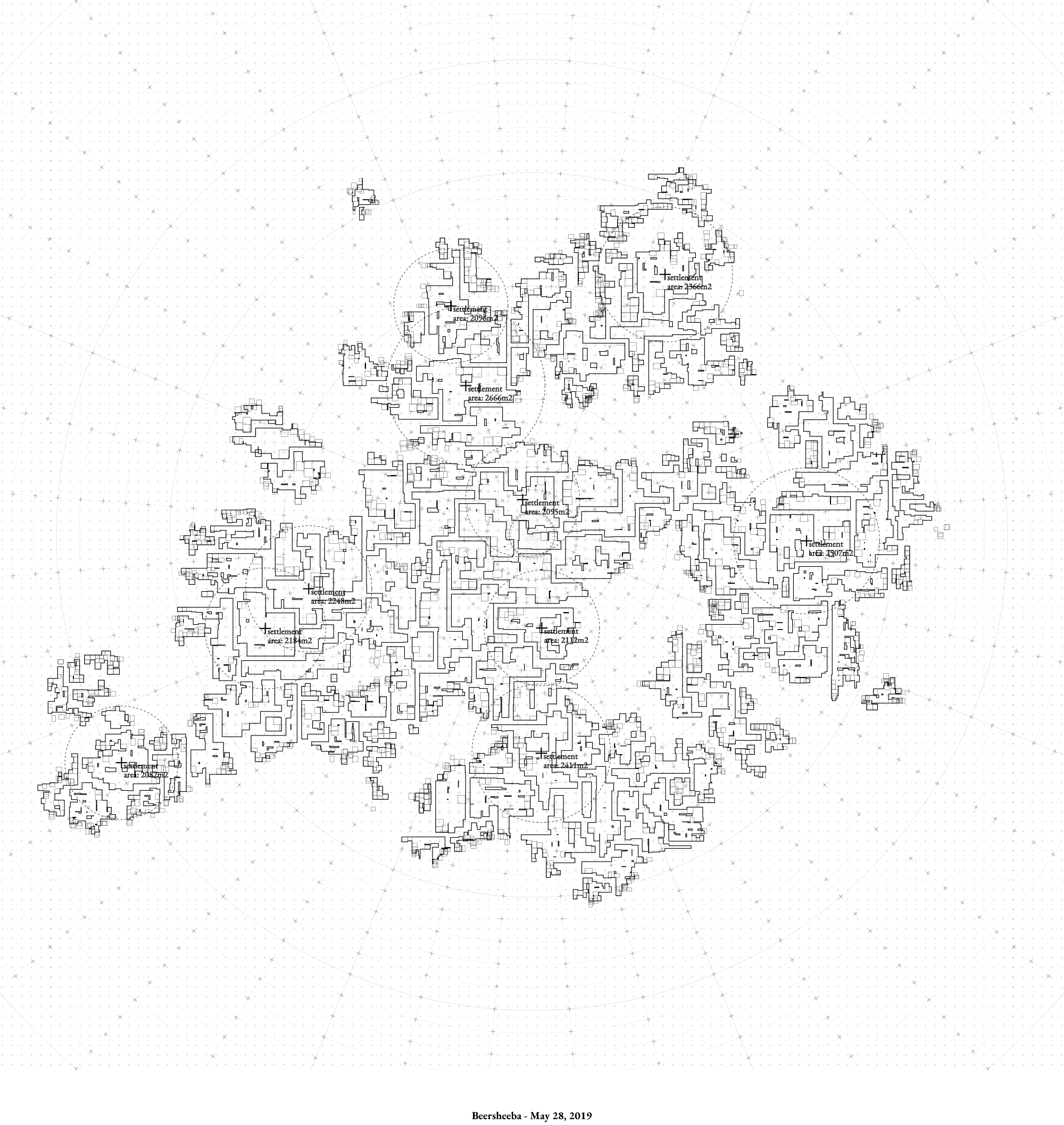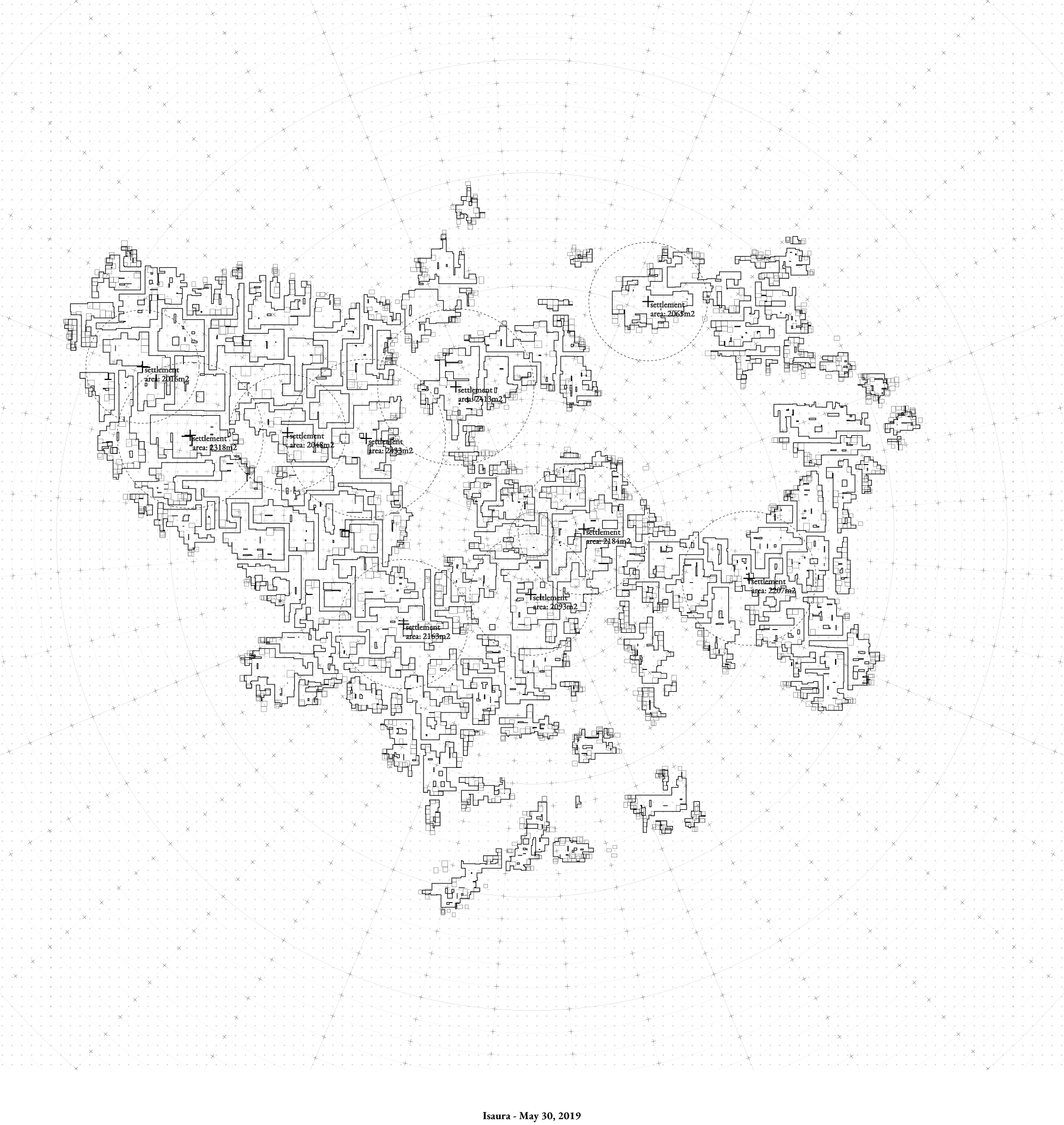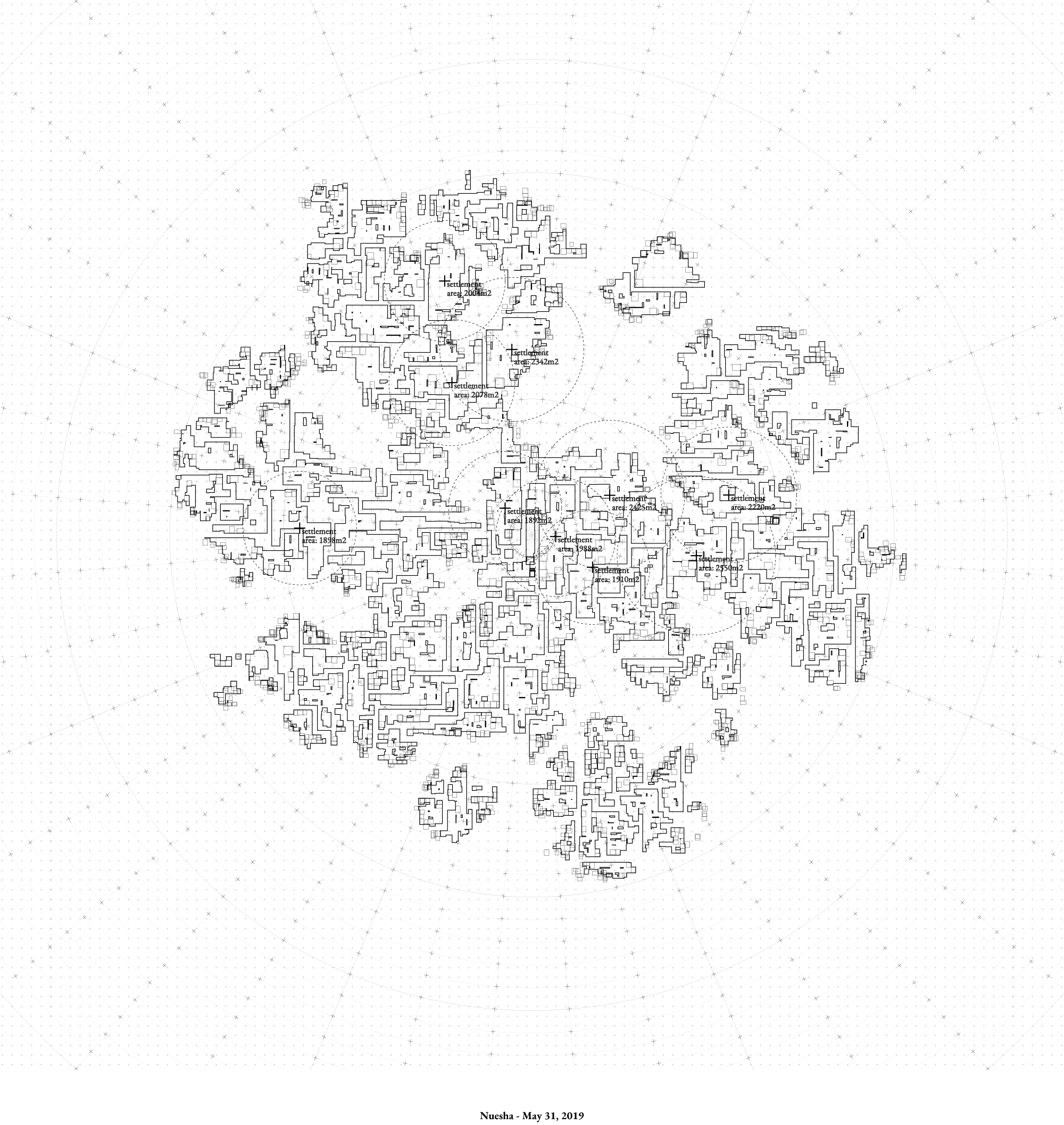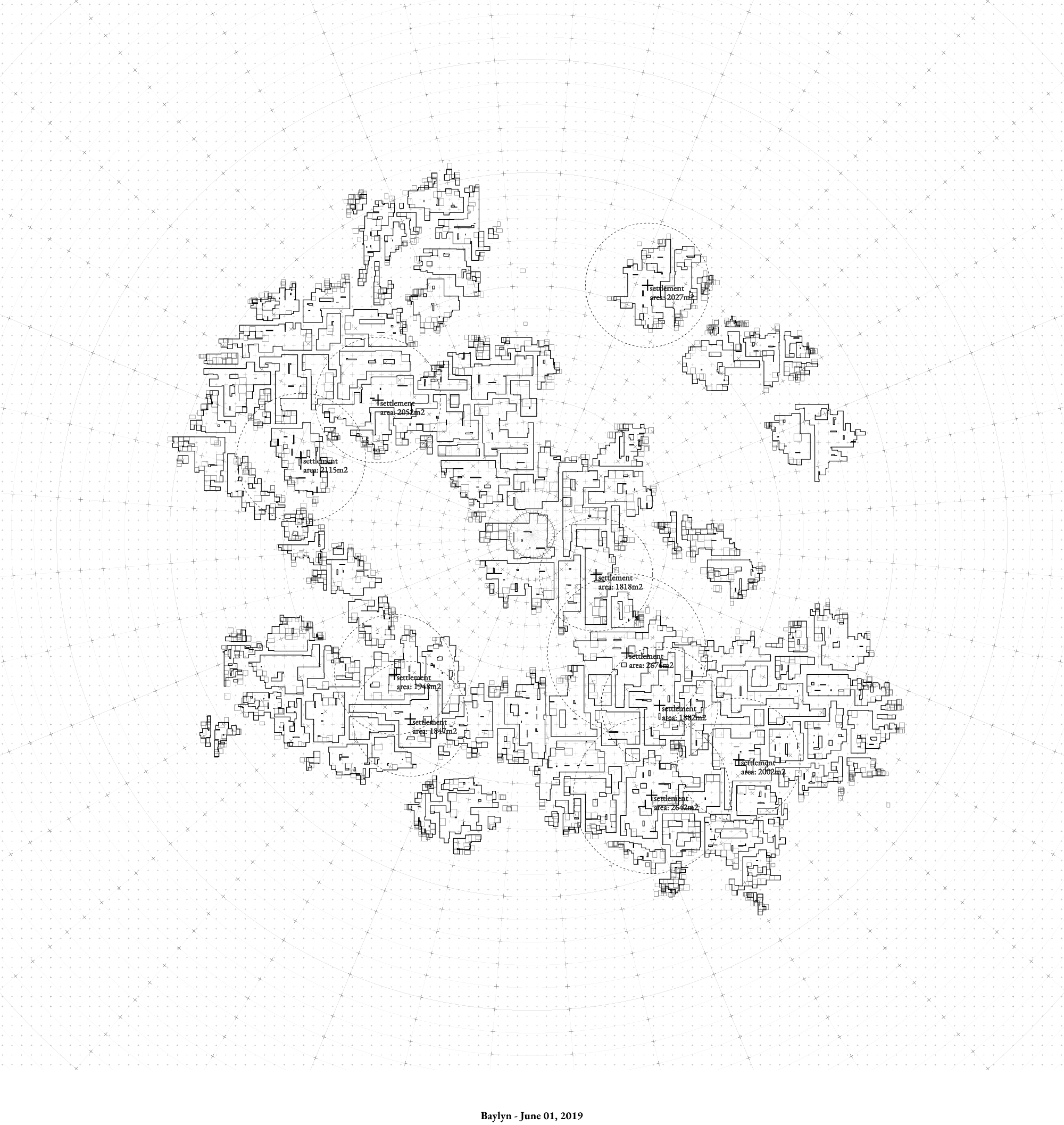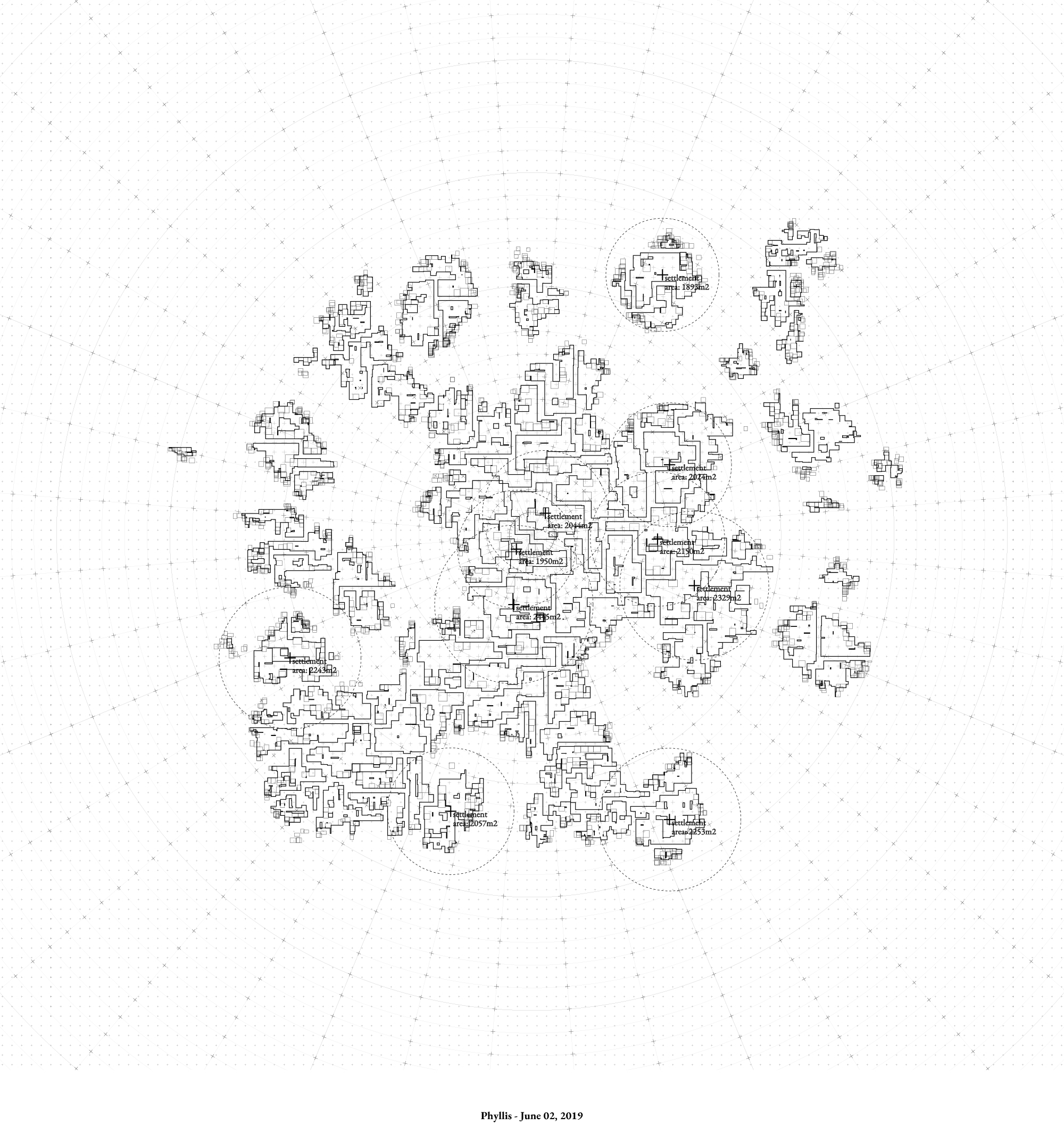appareil
Programming the Perpetual Unknowns
_
_ given: black ink / white paper / 60 minutes
_ construct an instrument
_ make a graphical survey of a place by channelling a physical force until it makes a drawing
It is with these words that Machinic Protocols began, an academic research within the IAAC. This set of instructions was given to a group of students to launch an investigation on automating drawing to put into question our relationship to the world: to neglect the desire to represent in favour of a radical process of translation of physical and temporal qualities.
The exercise concluded with a series of cartographic drawings of movements created by physical forces, such as the wind, created through automated instruments animating a pen on a page. The answer provided by the students Mercedes Swiecicki and Connor Stevens translated waves into a series of circular drawings: a sensor floats on the surface of the sea, sensitive to horizontality; when a wave disrupts its orientation, the sensor sends a signal to a motor that rotates a pendulum armed with a pen, leaving traces of ink on a horizontal canvas. The pendulum turns on itself, slowly reducing its height in relation to the paper, until it no longer touches it, which marks the end of the experiment. In the drawing, the distance of each stroke from the centre of the page thus reports the time at which it was drawn. We can read, by observing its dark areas, when the sea was more or less agitated. The position of the trace along the circular axis however, is uncontrollable and gives a random dimension to the drawing. The experience, repeated several times, brings each time a different and unique drawing that echoes what animates it: a complex nature - partially predictable yet always new.
This work of transcription that reflects a phenomenon and its temporality in drawing puts forward several questions, firstly, that of time. Although we often forget it, whether in art or in architecture, it is central to any work. Drawing, painting, or building - its construction and its future use – all contain time in the sense that their genesis occurred over a period rather than an instant. Time inexorably implies the future, and the future implies the uncertain. This presents the key question of interest: in a process of design, how does one go about working in an uncertain framework? The second question brings up the author: who is s/he? Is it the designer of the machine, the one that starts its operation, the machine itself, or the nature that drives it? Eventually, they are agents, all essential to the creation of the drawing: if one of them has a flaw, the experiment fails: it requires the contribution of each one to give to the result its complex and unpredictable character. Drawing is therefore the fruit of the work of a set of agents, some human, others mechanical. This questions the ground of the common design method and brings it into a reality of collaboration where the question of control within the relationship between the designer and the work is put in doubt. The outcome, in the drawing from the sea, is created by a protocol, and not by a gesture: a set of instructions that dictates their behaviour to actors while leaving them a certain freedom of expression which leads towards a partially foreseeable result.
Presented in the exhibition Augures at the Biennial of Architecture and Landscape of Paris, Programming the Perpetual Unknown is an experiment that interweaves drawing and automation in order to address these questions. It is a fiction that takes the form of a game between two actors: a fictional sand landscape in constant transformation and a drawing of a city, dynamic as well, that inhabits it. The two adapt to each other: the city responds to the changes in the landscape and conversely, the landscape is transformed when the city expands. The two different matters answer to each other as two forces as they negotiate and search in vain for a balance that is never attained. It is a perpetual machine simultaneously producing cities and landscapes.
The installation is built as an environment that combines electronics, artificial intelligence and machine learning: it contains sand, fans, colour sensors and an algorithm that sets it all in motion. The initial condition consists of eight sandy hills on which eight fans blow to erode them slowly spreads the sand on the horizontal field. These surfaces of moving sand are recognised by a set of sensors that recompose a dynamic map which in turn serves as a basis for dictating their behaviour to the fans - on/off according to a simple rule: when an area contains a large amount of sand, the fans nearby activate, otherwise they switch off. The sand migrates from one area to another by constantly reorganizing itself, like a geological formation in an accelerated temporality.
From above, the map is filmed - real-time image recognition - and serves as the input for the algorithm that transforms its surfaces into tiny squares that unite each other, such as dwellings. The result is a large dynamic drawing projected next to the sand map. According to the algorithm, the groupings of squares cannot exceed a certain surface area. They are then surrounded by a free space: the growth of the system gives rise to neighbourhoods separated by passages or streets. The city plan is constantly updated according to the transformations of the sand: when the wind blows, the sand disappears and reappears elsewhere and at the same time, in the drawing, the neighbourhoods are extinguished and reborn farther afield.
So far, the scheme is linear but it does possess an additional feature that makes it circular: when the city over-densifies and it has no more space to grow, it is she who suddenly orders the fans to turn on to send the sand elsewhere, resulting in a decrease in density. In this case, it is no longer the landscape that dictates its morphology to the city, but the opposite and the order is reversed. It is this rule in the protocol that makes the system reciprocal, there is no longer a hierarchy between the environment and the way it is inhabited: the two actors affect each other according to their own needs.
This game is a fiction that distributes sand and draws houses, an analogy of our environment and our way of inhabiting it. So far in our history, each city can be considered as unique. It is born and grows reacting to the context on which it sits, constantly adapting to it. The complexity of each landscape is translated into a city that always differentiates itself from others. The context is geology, that which gives shape to the river, to the slope of the slope, to the quality of the soil; it is its climate too, its winds, its sunshine, its temperatures; and then its resources: water, flora, fauna (...). Our way of inhabiting the territory is therefore a reaction to the ground on which we are, but it also responds to our needs as a species and society: our social relations, our exchanges, the ways in which we walk, the ways in which we inhabit. Today, the context and our needs are subject to changes that are faster than in the past. The world has accelerated. Beyond geographical forms, we must consider other rapid factors that affect the development of our cities. Climate change is one of them, with its consequences on the water level of the rivers and on vegetation. We, as a species, subject to the rapid advancement of technology, should change our way of interacting, and of navigating space, of living the everyday. These new forces coerce us to reinvent our relationship in the milieu, in space, as well as in time: there is a certain pressure on the city of tomorrow to have to adapt to a greater degree, and more and more rapidly to the conditions that host it.
What are these sand maps, and what reading do they give? Through their forms, they express the forces to which they are subjected. When the dunes are transformed, one can see the desert, or the topography, but in the context of this abstract work, the interpretation of their meaning must remain open. These forms, as well as their temporality, are generic in a sense that they can be read in various ways: they could signify the underground water levels, a cloud of contamination, or the property values of real estate.... As for its temporality, its nature is also potentially multiple: it is free to be understood in years, but also in weeks, or even maybe in seconds.
In Programming the Perpetual Unknown, sand represents an ever-changing context, to which housing patterns are constantly being restored, yet the nature of this relationship is not unidirectional: it is reciprocal, because the act of inhabitation is also the beginning of its transformation. In the Anthropocene, nature can no longer be considered as dissociated from man: the two are linked in a single ecosystem, mutually influencing each other in a reciprocal relationship. This is what is implemented in the work presented here: thanks to the sensors, the digital code, and the automation of the installation, the sand controls the city in the same manner that the city controls the sand. There is a lot of unknown in the behaviour of this machine, especially the results it produces every day, which are always different. This work attempts to propel us into a future reality, or simply to exacerbate the present, in which the relationship between wo/man and her/his environment is even more interwoven than today.
Finally, this installation is only a game with open interpretations, featuring a sand landscape animated by wind, and a city drawing simulated by an algorithm; the two are in constant negotiation, seeking balance in an automated performance. The movement is perpetual and the outcome is unknown, all governed by a protocol of actions in which the speed of a revolution of a fan could be affected by the density of a built environment drawn in a digital space and vice versa.
The cities that the installation invents every day have no author; their design is automated, governed by a code. They build themselves subject to the way the underlying context evolves. This force, and this material - the wind and the sand - are the analogy of an environment composed of the geography of a territory, but also by the one who lives in it: its population which forces, every day, the city to adapt according to his needs. Our cities of today are heavy, built to withstand and not conducive to adapt to the changing world at an infernal speed. Today, the needs seem to have changed so they must respond, adapt, and be able to manage themselves. Our built environment is probably not prepared to adapt to the rapid changes that they are going to face. What about our models of design and projection of our cities, our infrastructures, our public spaces, and our buildings? Perhaps there is, in this work, not an answer, but an opening that brings technology and its digital dimension, with all that they allow again, as a central element to rethink our relationship to the world.
_
Programmer l’Inconnu Perpétuel
APPAREIL - IAAC
Machinic Protocols
Direction: Edouard Cabay
Physical Computing: Angel Muñoz - WeAreCoded
Team: Rodrigo Aguirre, Anthony Boguszewski, Peter Geelmuyden Magnus.
The works of this installation was developed with Machinic Protocols, a research project of the Master in Advanced Architecture of IAAC, in 2018.
Students:
Megan Smylie, Doruk Yildirim, Timothy Lam, Olivia Alvarez, Filippo Testa, Axel Van der Vegte, Deepak Sundaram, Sophia Di Biase, Surayyn Selvan, Tarek Kassouf, Maria Fechner, Nicolas Saade, Manan Jain, Anmol Arora, Kammil Carranza, Neel Prajapati, Justin Sheinberg, Ricardo Lichtle, Oana Taut, Eszter Olah, Vinay Khare, akshay Gopinath, abhay Devidas, Amon Yimeng Wei.


